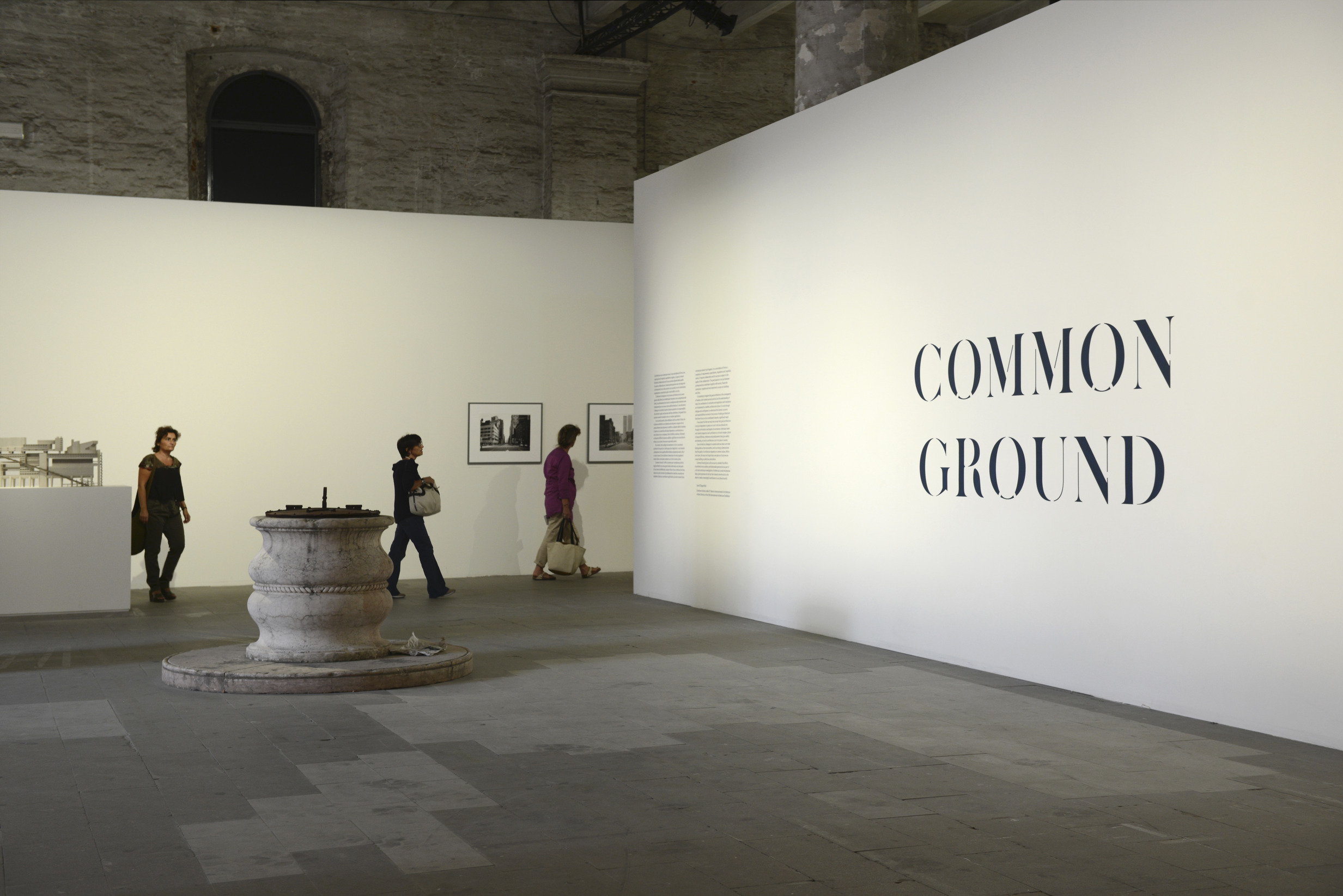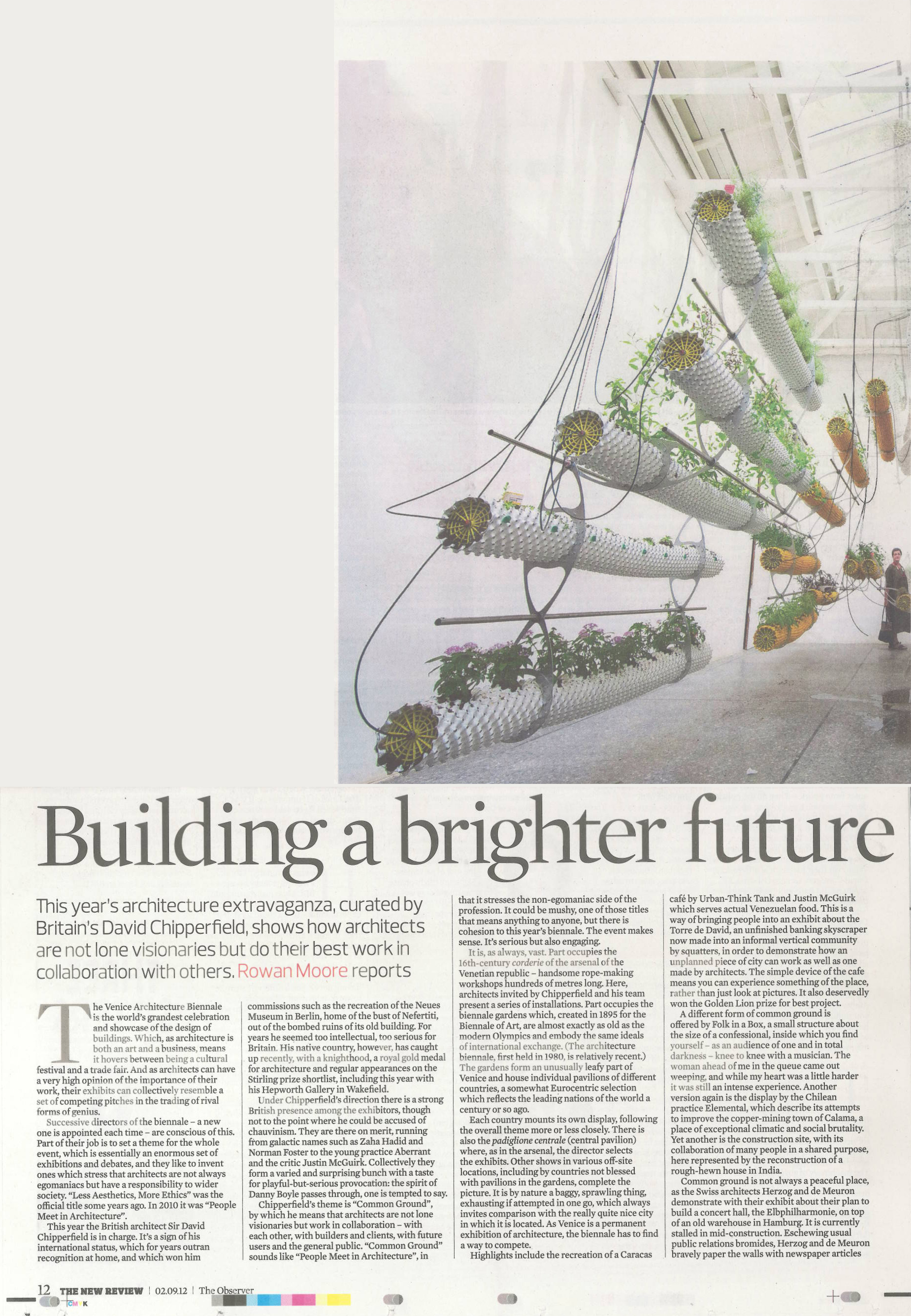David Chipperfield’s attempt to drag the Venice Biennale away from the starchitect and back to ideas for all humanity is only good in parts.
The Venice Architecture Biennale is not a single thing, even though it is always given a single theme. Like Caesar’s Gaul, it is divided into three parts. Most important is the section curated by the director himself (this time David Chipperfield) in the medieval naval Arsenale buildings and the Central Pavilion in the Biennale Gardens. Then comes the cluster of separate exhibitions taking place in all the purpose-built national pavilions dotted around the gardens and in various places across the city. These are curated by the individual nations, vary greatly in quality, and often pay only lip service to the given theme. Thirdly there are ‘collateral events’, a kind of Biennale Fringe which is nonetheless strictly policed. Along with all this there are endless talks, debates, parties and even more fringe and not remotely official happenings. Sometimes there is even controversy – such as this year’s protests by supporters of jailed Russian girlpunk group Pussy Riot in the vicinity of the Russian Pavilion.
This time, the theme is ‘Common Ground’. It’s about what architects and people share – influence, ideas, place, humanity. It’s meant to be an antidote to the years of sensational icon-building in which starchitects competed to show ever more exotic confections. ‘My feeling is that you have to distinguish between a biennale and a trade fair,’ Chipperfield remarked in the run-up to the opening. ‘It must be about ideas. I thought this was a moment to try to create a concept, taking an issue that was in the air.’ Actually it’s the fourth biennale in a row to try in various ways to break free from the icon and others have tried even before that: one remembers Massimiliano Fuksas’ theme ‘Less Aesthetics, more Ethics’ from 2000. In truth, ‘Common Ground’ does not look or feel so very different from its predecessors, though there is less of the terrible business of architects pretending to be artists, and more collaboration between architects as Chipperfield intended. ‘Despite our different concerns, backgrounds and points of view we do indeed share common ground, and this forms the basis of something we might describe as an architectural culture,’ he writes in his introduction to the show.
There are reasons for the relative sameness of these shows. One is that, customarily, the directors are appointed late, giving them an insanely short amount of time to pull it all together, on a shoestring budget. This was especially true of Chipperfield, whose appointment was delayed until January this year by the politics surrounding the departure of former Italian prime minister Silvio Berlusconi, who was trying to oust the Biennale’s president, Paulo Baratta. Baratta survived and the next Biennale may be different: it is likely to be directed by Rem Koolhaas, who thus has a great deal more time.
Another reason is the nature of the Arsenale buildings: tall, long, dauntingly magnificent. Architects have somehow to hold their own in this space, so typically it is broken up by a series of large-scale set-piece interventions. This time these included immersive video rooms by Lord Foster and Farshid Moussavi, which were a matter of taste. Foster’s theory-free, celebratory room with a million flashing and swirling images and names worked for me better than Moussavi’s somewhat strained presentation of what she calls architectural ‘affects’– formal gestures with no underlying meaning. Icons, you might say.
By Hugh Pearman
RIBA Journal October 2012



